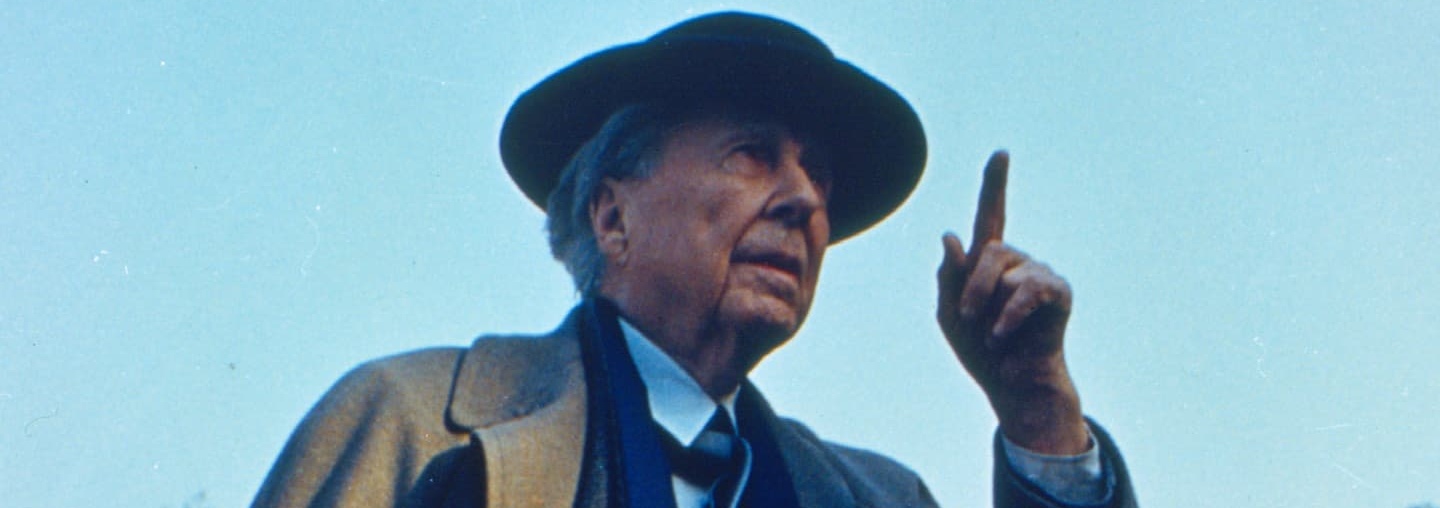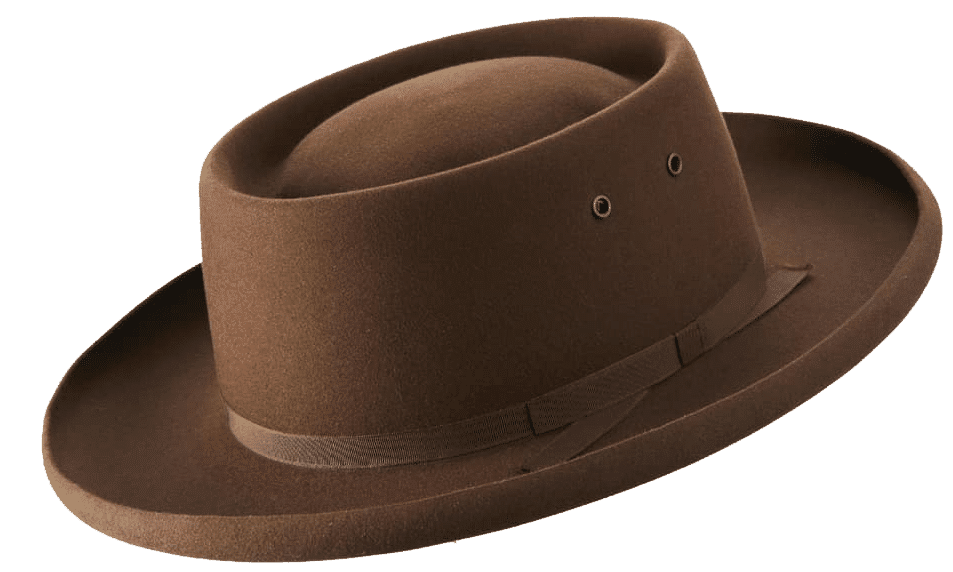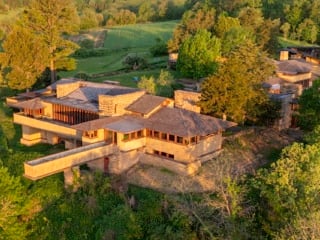
Architect of an Image
Jack Quinan | Mar 22, 2018
Just as Frank Lloyd Wright was able to formulate buildings quite fully in his mind prior to putting pencil to paper, he carefully crafted his physical appearance, always in a position of control of how he would be seen and perceived.
Shortly after 1888, when the Kodak Company began producing the roll film that revolutionized amateur photography, Wright purchased a camera and began shooting and developing his own film. Although fewer than 50 photographs exist from the 1890s, they represent a range of subjects—family photos, images of nature and landscape, portraits of friends, a series of furnishings inside his Oak Park living room—that reflect an uncommonly keen eye for composition, light, and shadow that would later serve him well when working with professional architectural photographers.
Among these early photographs is a series of seven self-portraits1 in which Wright introspectively gazes directly into the camera lens. We can’t read his mind but some context is helpful; after all, in those years around 1900, Wright had acquired a fine home and studio, a growing family, and a promising domestic architectural practice. Moreover, he was highly active socially, and on behalf of his practice, through lectures, exhibitions, and writing. Many people, including clients, talented studio assistants—Walter Burley Griffin, Marion Mahony, and George Elmslie—friends and neighbors, were attracted to his extraordinary talent and engaging personality. His self-portrait photographs may represent the moment of realization of the value of his personal appearance to his architectural practice. Other photos from this time also reveal that he had developed a taste for fine clothing, starched collars, and neckties as soon as he was gainfully employed by J.L. Silsbee.
The realization of a connection between a carefully crafted image and success was reaffirmed with the publication of “A Home in a Prairie Town,” Wright’s drawings of an unbuilt design for the March 1901 issue of the Ladies Home Journal. After Wright “shook the building out of his sleeve”—as he later characterized it—and crafted the sensational drawings, he was inundated with Prairie house commissions, the Larkin Administration Building, and Unity Temple—a body of work that propelled him into national and international prominence.

FIGURE 1

figure 2
As Wright’s career grew, and he became more and more adept at crafting an image, others began to consider him exceptional, multi-talented, highly energetic, and possibly a genius.
With a practice of his own, Wright was beginning to forge a distinctive mode of dress that might be described as “architectural.” He adopted the loose flowing ties worn by Oscar Wilde, C.R. Ashbee, Elbert Hubbard, and other artistic figures of the era, his hair was considerably longer, and according to the observations of an Oak Park neighbor in 1902, “Wright is a queer fellow, like Hubbard you know … he sometimes noses around his houses in silk knickerbocker breeches, etc.” According to another observer in 1910, “Wright was dressed to closely resemble the man in the Quaker Oats package, except his coat was like an outing coat. Knee trousers, long stockings, broad-brimmed brown hat, cane and his lordly strut.”2
Wright’s mode of dress involved an astute self-analysis. Of average height at around 5’7” – 5’8” he was athletic, with good posture, and handsome features animated by a disarming personality, a formidable intelligence, and unwavering self-confidence. Critic Henry-Russell Hitchcock, wrote of Wright: “That somewhat oversized head and face—oversized in relation to the rest of his body—seemed to expand when he was present and occupy all the space around.” Wright’s lifelong penchant for high starched collars served as an armature featuring that strongly molded face, the slightly oversized head, and its crown of rapidly whitening hair.3
Never one to let a design rest—even when he was its subject—Wright assembled additional accoutrements calculated to magnify his persona—elevated shoes for height, knickerbocker trousers and silk knee socks to reveal the structure of his legs (full length trousers seem to diminish him), an overcoat worn cape-like to encompass his upper body (a superstructure on two slender supports), a dashing scarf, a cane with which to magnify a gesture, and the pork pie hat worn low on his forehead so that he viewed the world as from beneath one of his own cantilevered roofs.

These attributes remain fairly constant throughout his career, although he often wore a beret,4 and for some occasions a conventional suit and tie. Photographs reveal the cut of clothes that were tailored for Wright, but they rarely do justice to the fine quality of the fabrics. Curtis Besinger, an apprentice who sometimes cleaned Wright’s bedroom, observed that he had four sets of identical tailor-made elevated shoes in different shades. The pork pie hats were tailor-made in Paris. Wright went about in his unconventional clothing with the same unwavering self-assurance with which he designed buildings, wrote, and lectured prolifically in public venues, on radio, and eventually television.

FIGURE 3

FIGURE 4
Following the resurgence of his career from the 1930s to the 1950s, with Fallingwater, the SC Johnson Headquarters, the Florida Southern College campus, a burst of Usonian houses for the middle class, and the cover of Time Magazine, Wright became a sought-after subject for many of the leading 20th century photographers including Henri Cartier-Bresson, Alfred Eisenstaedt, Arnold Newman, Laura Gilpin, Yousuf Karsh, Richard Avedon, Berenice Abbott, and Pedro Guerrero, as well as hundreds of press photographers and amateurs. Each wanted to capture something of this extraordinary man who had transcended the vocation of designing buildings to become an iconic figure battling the International Style, extolling organicism, and issuing witty, incisive critical evaluations of American culture.
Jack Quinan, University at Buffalo (SUNY) Distinguished Service Professor Emeritus, is a historian of architecture specializing in the architecture of Frank Lloyd Wright. He is a founder of the Frank Lloyd Wright Building Conservancy, an organization dedicated to the preservation of Wright’s extant work, and he is the Senior Curator and a Member of the Board of Directors of Wright’s Darwin D. Martin House in Buffalo, New York. He has written three books on aspects of Wright work in Buffalo and is currently writing a book on Wright through the lens of phenomenology.
Limited-Edition Frank Lloyd Wright Porkpie Hat
The Frank Lloyd Wright Foundation has partnered with Chicago’s Optimo, maker of exquisite-quality custom hats, to offer a limited-edition hat modeled after the one Wright most favored. Following a careful study of Wright’s own hats in the Foundation’s collections, Optimo has crafted a replica from the highest-quality felt dyed a rich shade of brown. Celebrating the 150th anniversary of Wright’s birth, this special hat is limited to 150 custom pieces.




